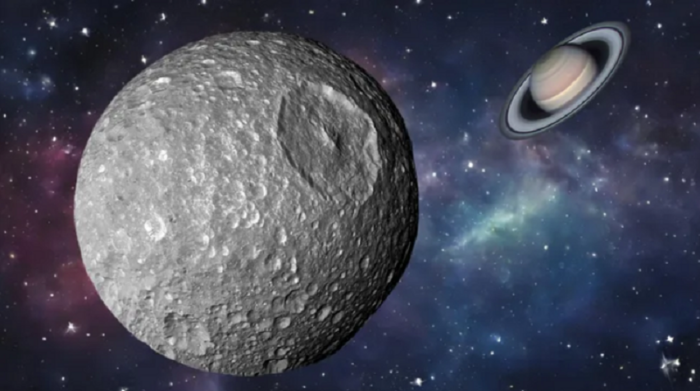New clues are helping to answer the question of the origin of the hidden ocean of Mimas, Saturn's small moon. The first signs that this small moon could hide an ocean date back to 2022 and its existence was confirmed in February 2024. The new study led by the American Southwest Research Institute and published in the journal Earth and Planetary Science Letters suggests that the cause could be the force exerted by the planet: gravitational attraction has modified Mimas' orbit over millions of years, making it less and less elongated, and this would have caused the satellite to heat up, causing its icy crust to melt and thin. This new information could have a major impact on the search for life within the Solar System.
Mimas has a diameter of only 400 kilometers: it is therefore very small even compared to Earth's Moon, whose diameter reaches almost 3,500 kilometers. According to the data collected, the hidden ocean should be about 20 to 30 kilometers below the surface and should be 40 to 45 kilometers deep: this means that the ocean occupies about half the volume of Saturn's moon and it is precisely this characteristic that causes the oscillations detected during its rotation. Until now, however, there were doubts about the origin of this mass of liquid water, which was thought to be unable to be hosted by such small bodies.
Researchers led by Alyssa Rose Rhoden are now pointing the finger at the phenomenon known as 'tidal heating', which also plays a fundamental role, for example, for Jupiter's moons. This phenomenon occurs when a body is distorted or stretched due to changes in the gravitational forces it experiences following an elliptical, therefore very elongated, orbit. The variations cause the moon to heat up by drawing energy from its orbit: according to the authors, therefore, Mimas will increasingly modify its path until it becomes circular and, at that point, the tidal heating phenomenon will stop.

